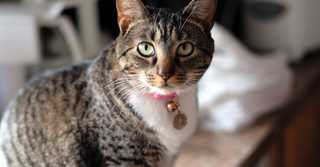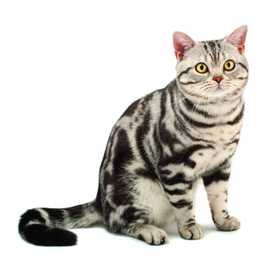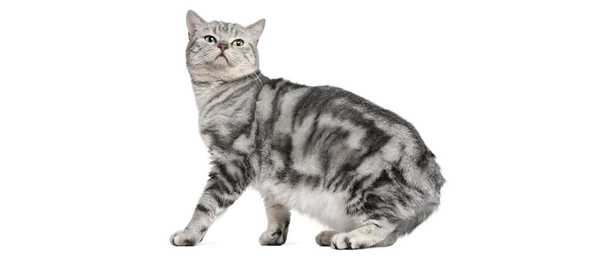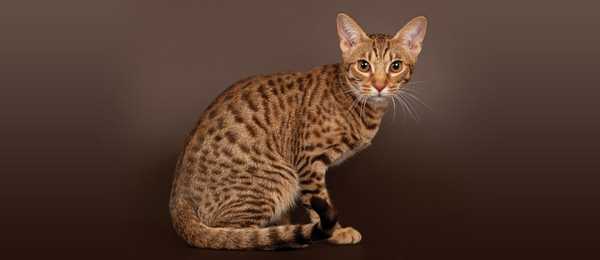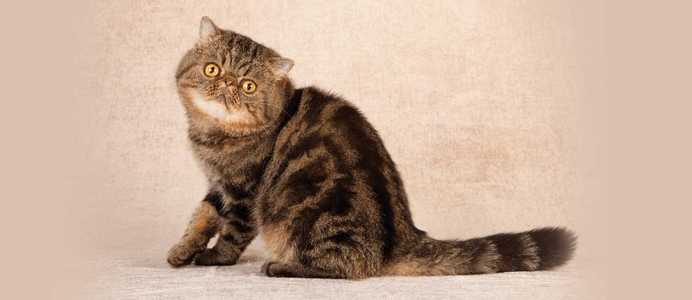
The ideal Exotic should present an impression of a heavily boned, well balanced cat with a sweet expression and soft, round lines. The large, round eyes set wide apart in a large round head contribute to the overall look and expression. The thick, plush coat softens the lines of the cat and accentuates the roundness in appearance.
Playfulness
Activity Level
Friendliness to Other Pets
Friendliness to Children
Grooming Requirements
Vocality
Need for attention
Affection towards owners
Docility
Intelligence
Independence
Hardiness
Disclaimer: While the characteristics mentioned here may frequently represent this breed, cats are individuals whose personalities and appearances will vary. Please consult the adoption organization for details on a specific pet.
Personality
While Persians and their relatives have a laid-back, mellow personality, Exotics are also playful and enjoy a good game of catching the catnip mouse between bouts of catching a few ZZZs. Because of the American Shorthair influence, Exotics are reported to be somewhat livelier than Persians. Undoubtedly, the Exotic personality is, if not identical, very much like the Persian’s—laidback, loyal, sweet, and affectionate. They want to be involved in their favorite humans’ lives and will quietly follow them from room to room just to see what they are doing. They also enjoy hugs and cuddles, and lavish their humans with purrs and licks of affection until the thick coat drives them away to lounge on cool kitchen linoleum or cold fireplace bricks. Because of the short coat, their guardians can spend more time playing with their Exotics than grooming them.
Physical Attributes
Body
Cobby type, low on the legs, broad and deep through the chest, equally massive across the shoulders and rump, with a well-rounded midsection and level back. Good muscle tone, with no evidence of obesity. Large or medium in size. Quality the determining consideration rather than size.
Head
Round and massive, with great breadth of skull. Round face with round underlying bone structure. Well set on a short, thick neck. Skull structure to be smooth and round to the touch and not unduly exaggerated from where the forehead begins at the top of the break to the back of the head, as well as across the breadth between the ears. When viewed in profile, the prominence of the eyes is apparent and the forehead, nose, and chin appear to be in vertical alignment. Nose is short, snub, and broad, with “break” centered between the eyes. Cheeks full. Muzzle not overly pronounced, smoothing nicely into the cheeks. Chin full, well-developed, and firmly rounded, reflecting a proper bite.
Ears
Small, round tipped, tilted forward, and not unduly open at the base. Set far apart, and low on the head, fitting into (without distorting) the rounded contour of the head.
Eyes
Large, round, and full. Set level and far apart, giving a sweet expression to the face. Brilliant in color; eye color depends upon coat color.
History
In the late 1950s American Shorthair fanciers, motivated by the popularity of the Persian, secretly began to mix Persians into their American Shorthair bloodlines to improve body type and to introduce the beautiful and favored silver Persian color into the American. (At that time and until 1965 American Shorthairs were known as Domestic Shorthairs.) Because of this hybridization, the boning of the American grew heavier, the head rounder, and the nose shorter, and the coat denser and longer. Other American Shorthair breeders, appalled at the changes occurring in the breed, became determined to disallow any Americans that showed signs of hybridization. Exotic Shorthairs might have faded away into cat fancy history if it wasn’t for the efforts of CFA judge Jane Martinke, and the Exotic Shorthair was first accepted for championship status by the CFA in 1967. CFA breeders were then allowed to shift their American Shorthair/Persian hybrids into the newly formed Exotic Shorthair classification. At first, Exotic breeders used Burmese and Russian Blues in addition to American Shorthairs to introduce the shorthair gene. As the breed began to gain in popularity, and as the gene pool grew larger, the CFA began limiting the outcrosses. In 1987 the CFA closed the Exotic to shorthair outcrosses altogether, leaving the Persian as the CFA’s only allowable outcross. In 1971, the first Exotic Shorthair achieved the status of grand champion.Today, the Exotic is one of the most popular purebred shorthairs.
